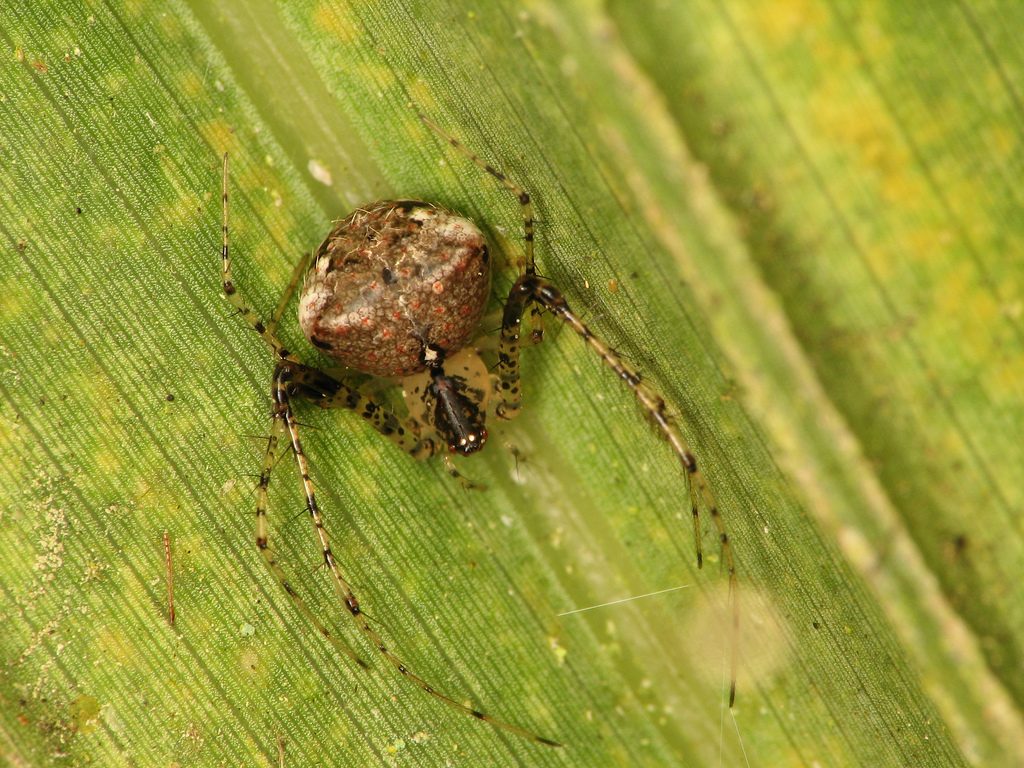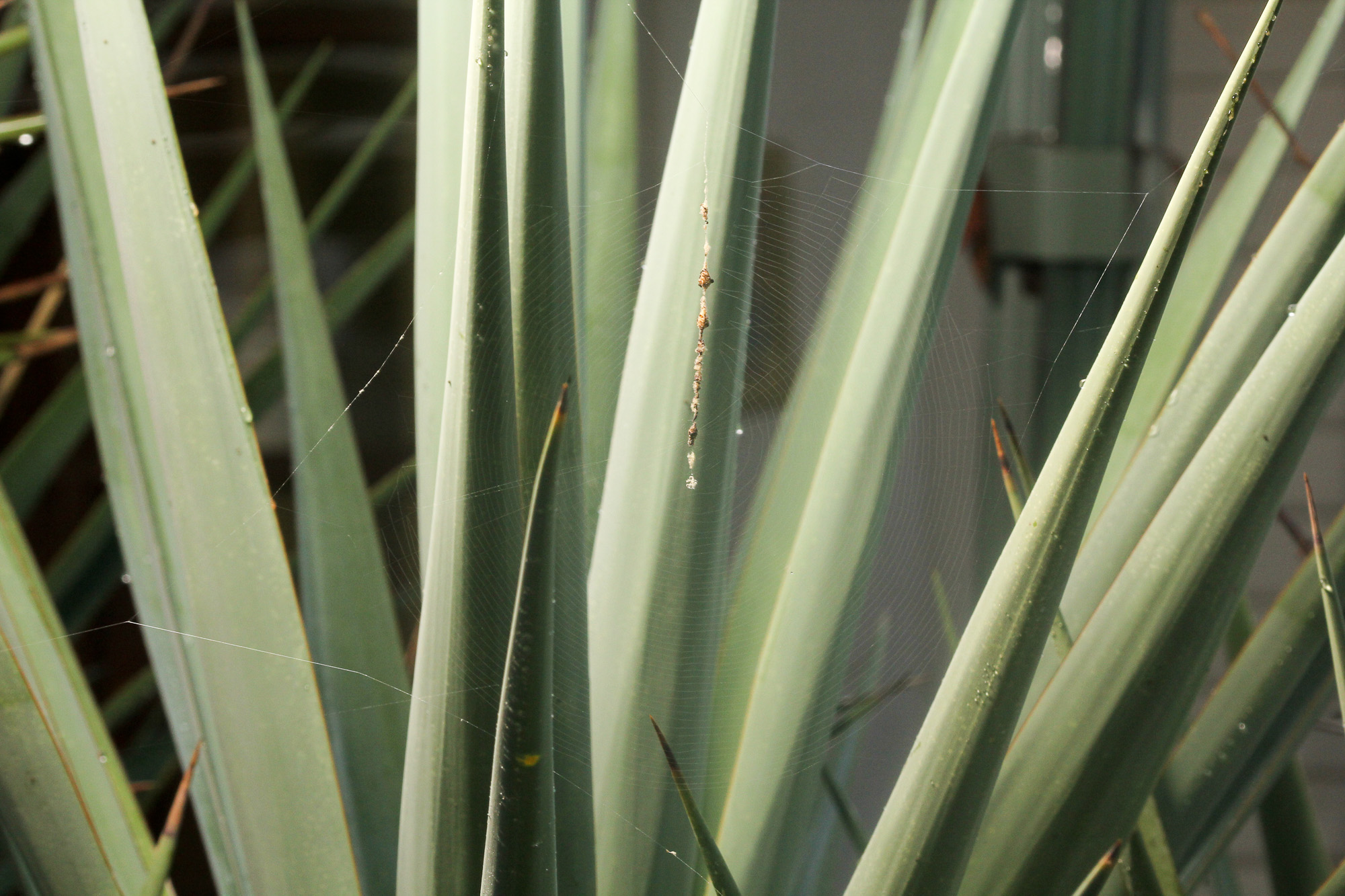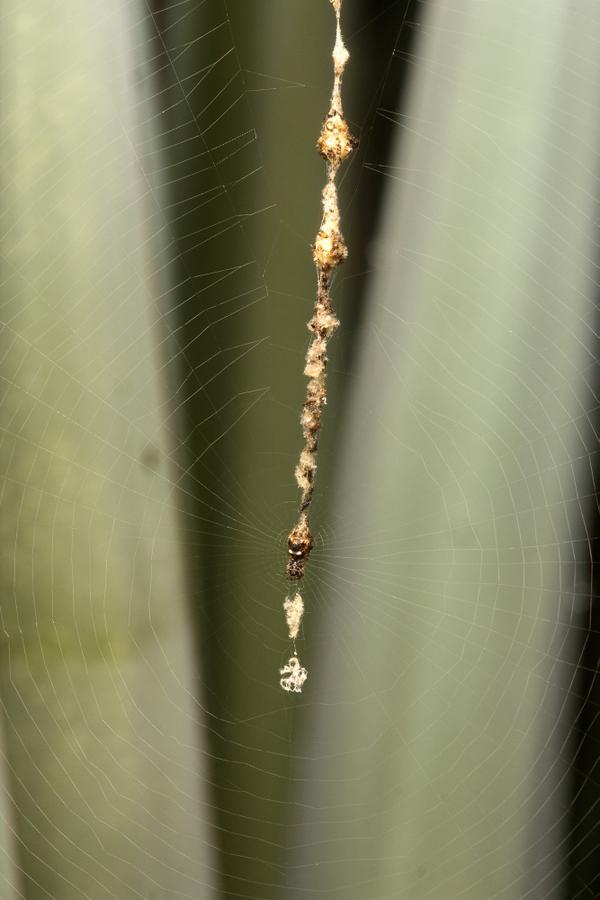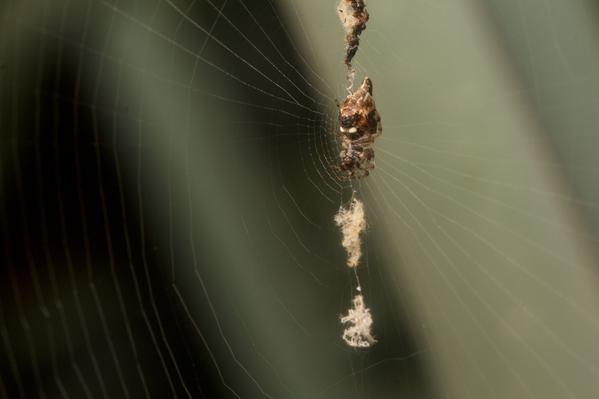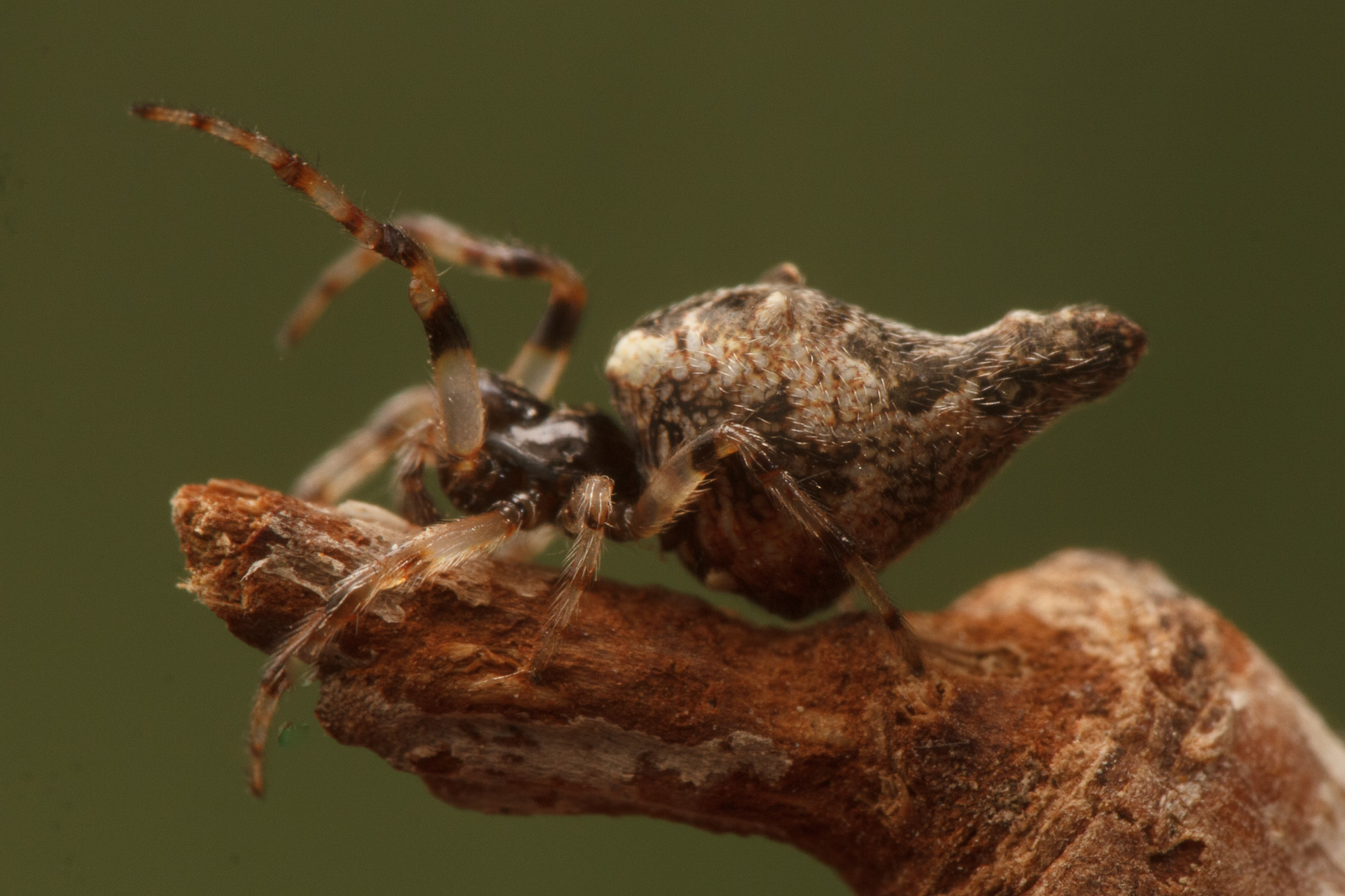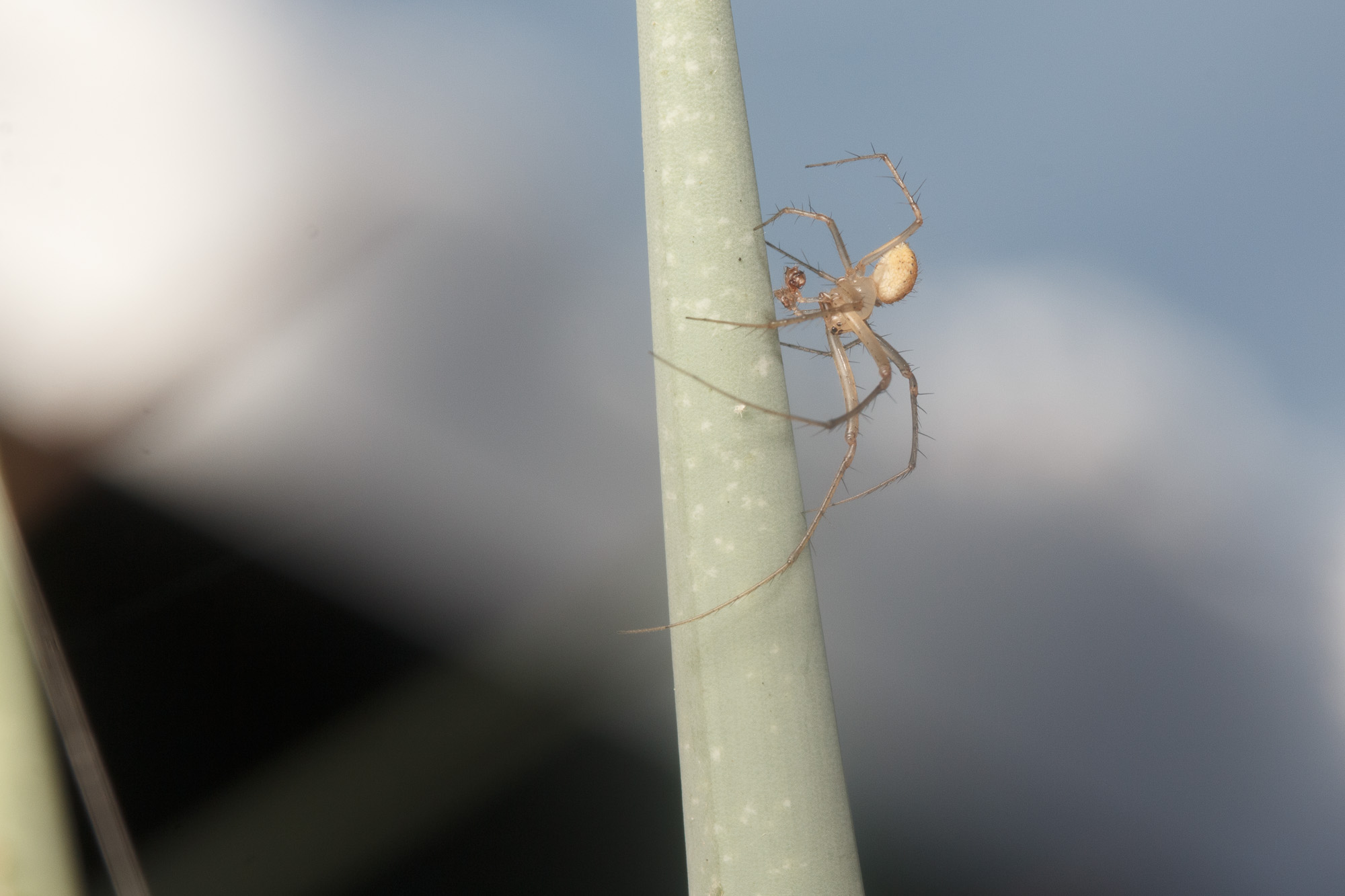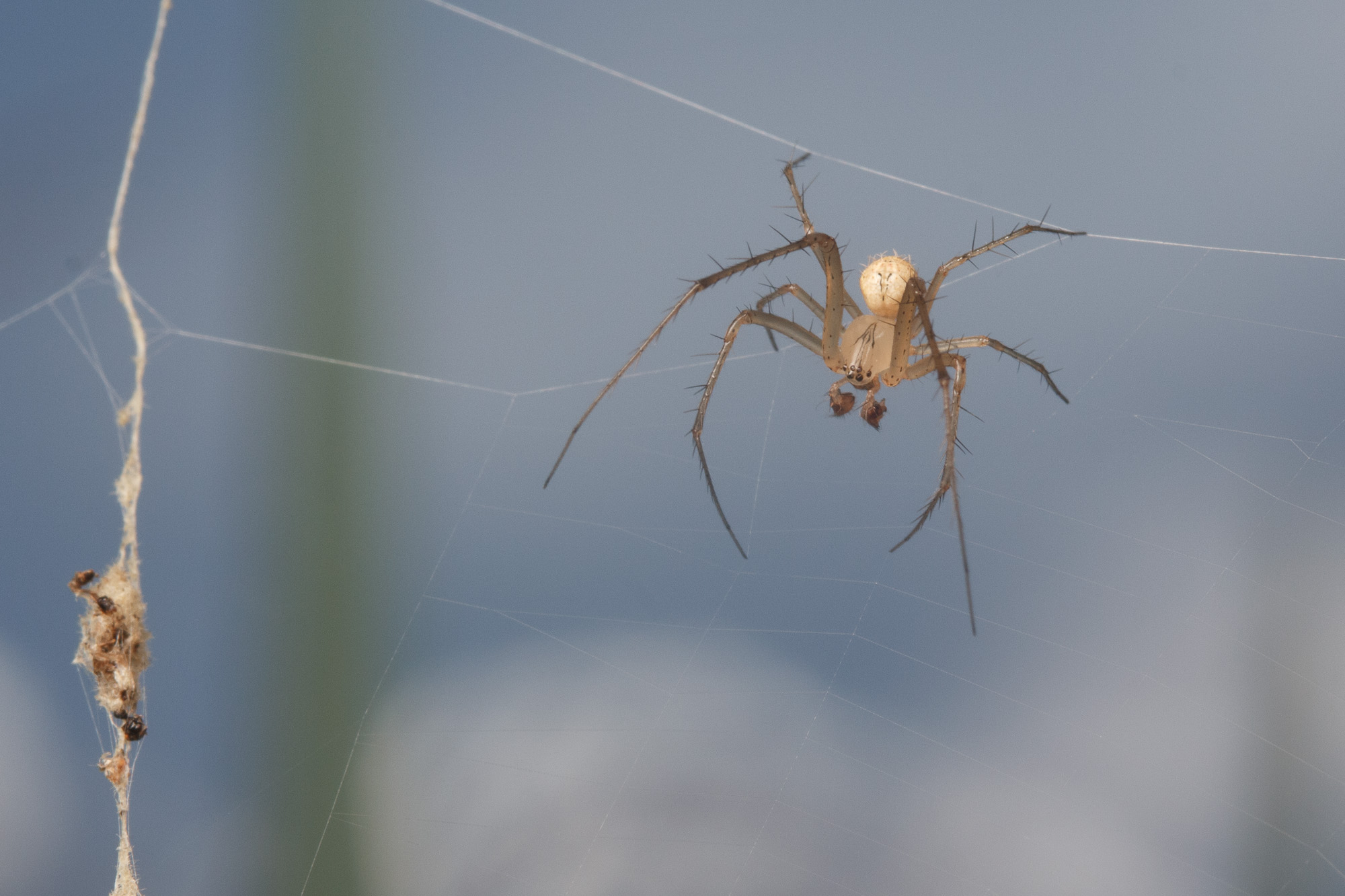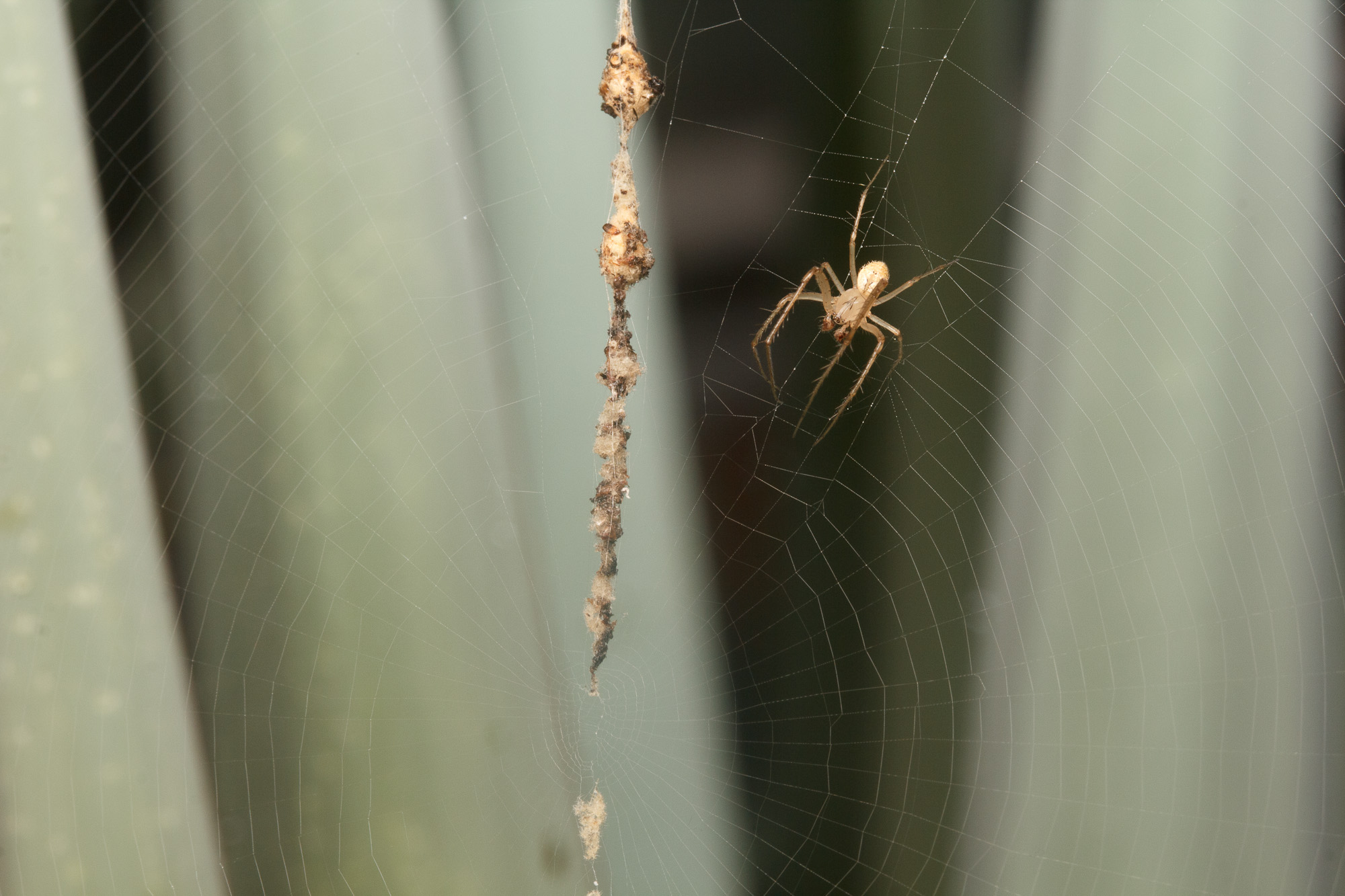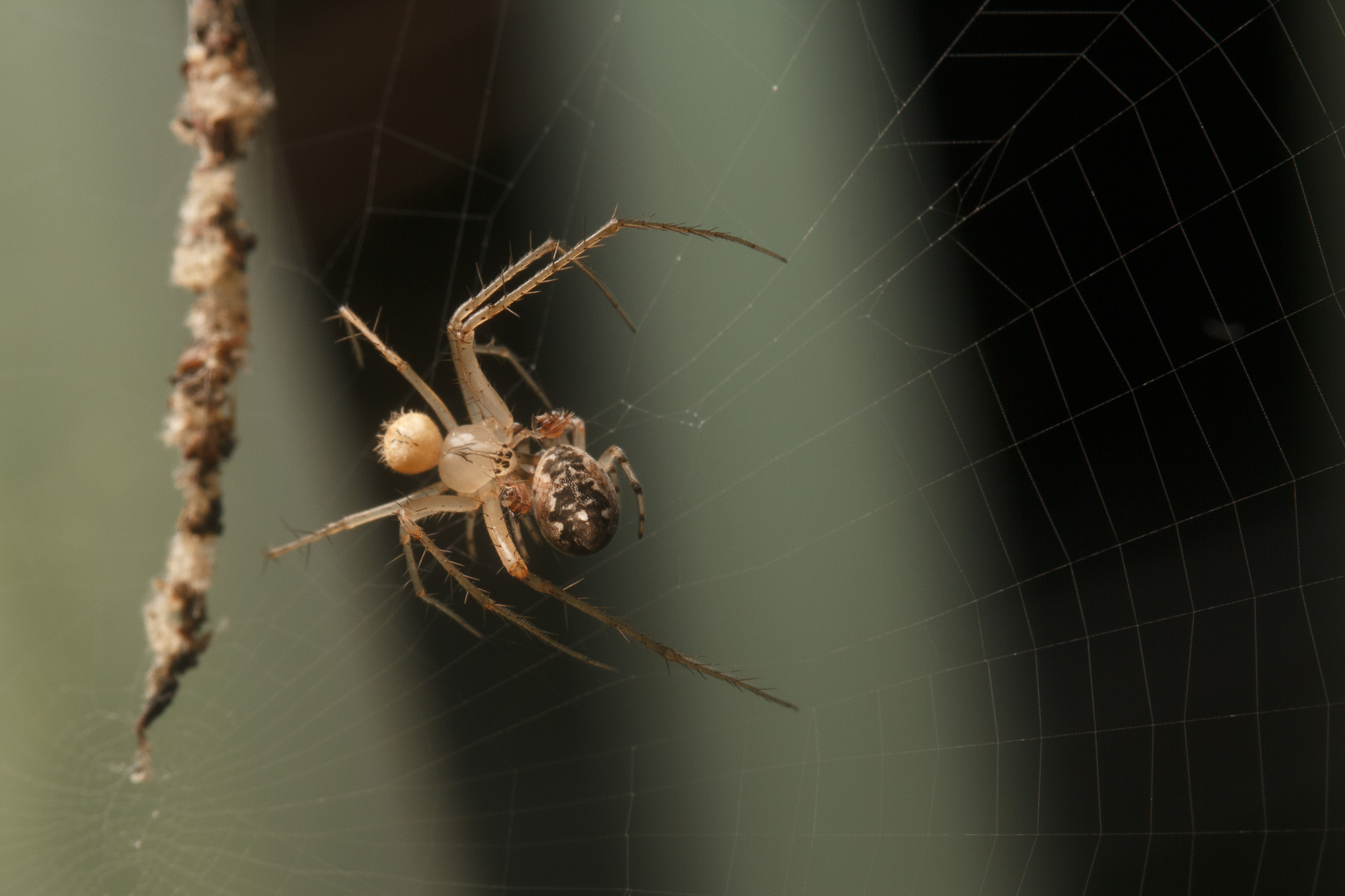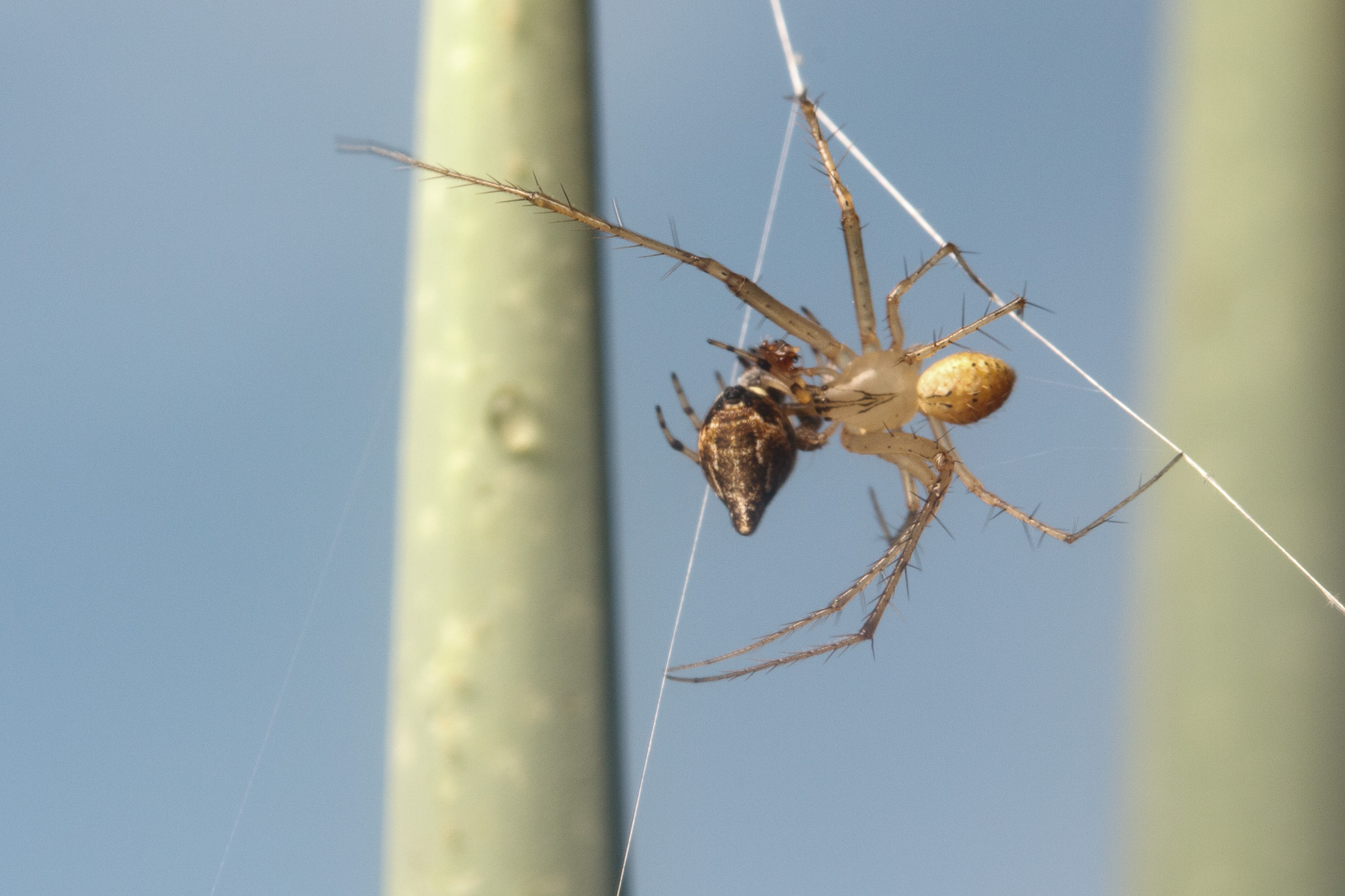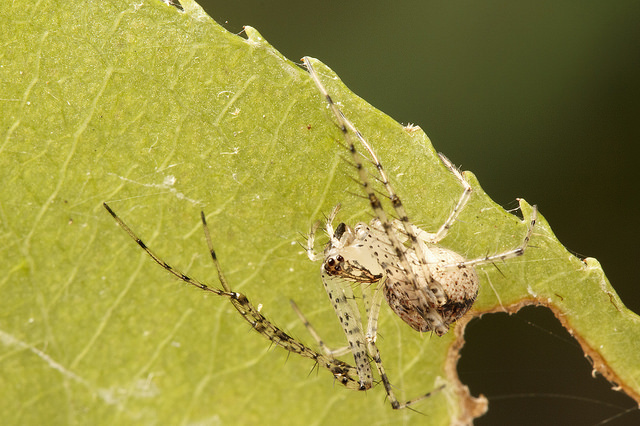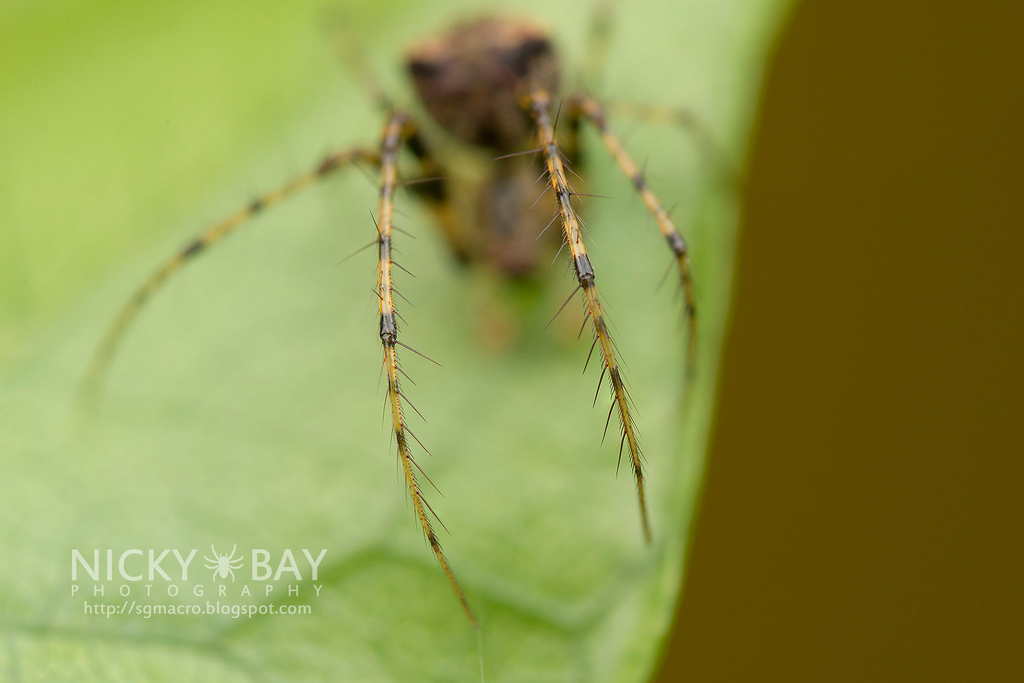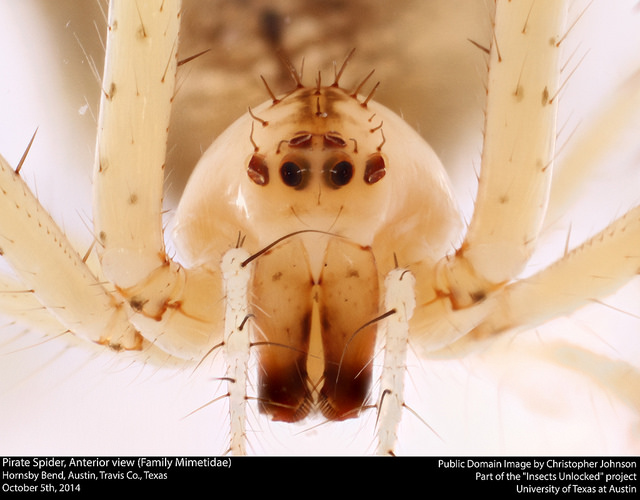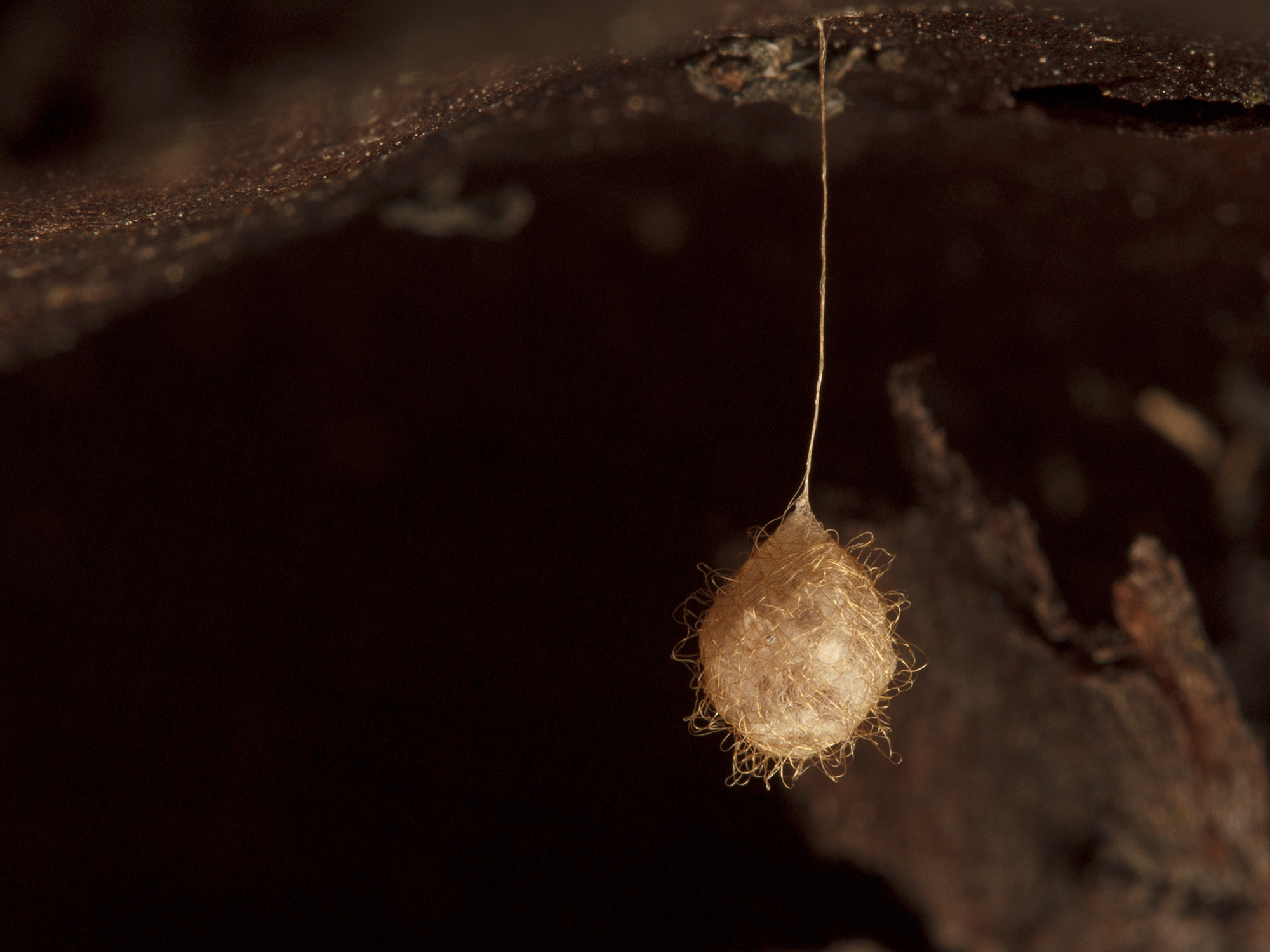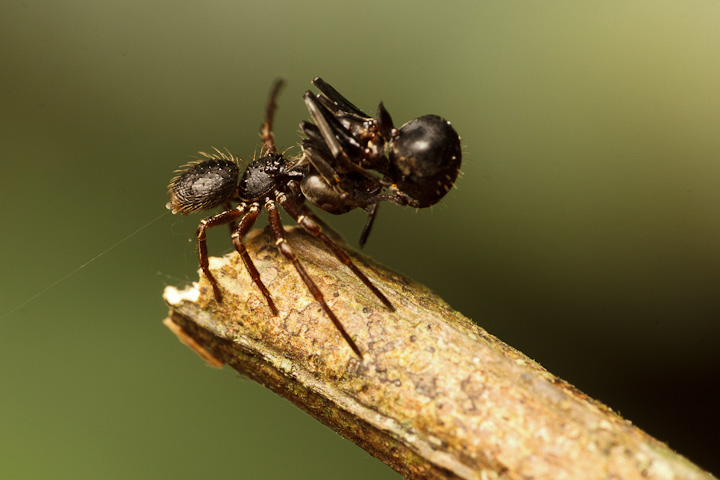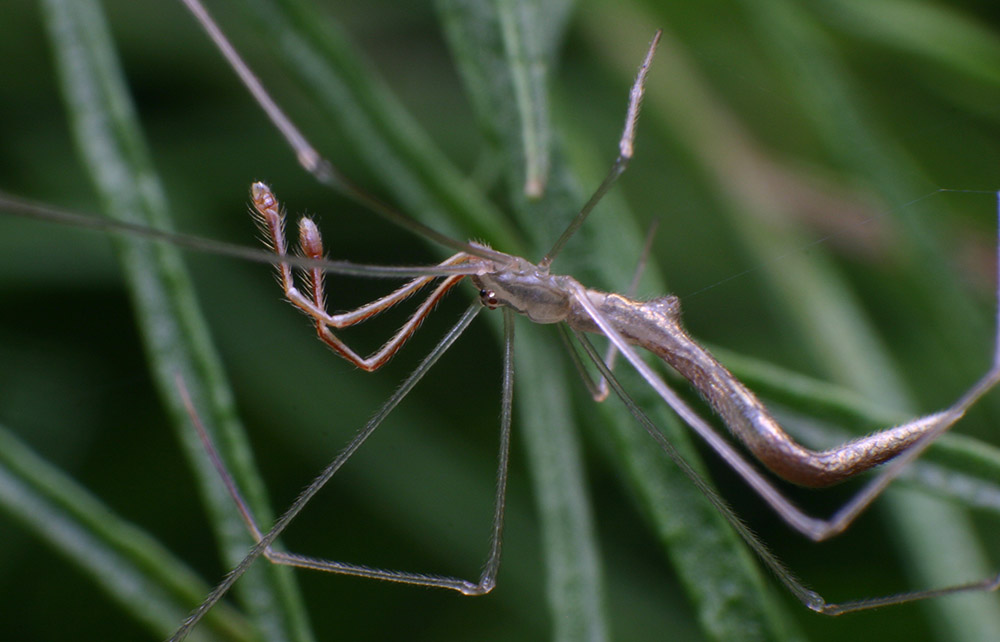
Male Rhomphaea fictilium – a theridiid with a ridiculously long abdomen and pedipalps! Photo: Al Denesbeck (used with permission).
I’ve written about long spiders before: the “stretch spiders” in the family Tetragnathidae (long-jawed orb-weavers) are notable for their elongated bodies as well as their long jaws. When I first spotted Rhomphaea, I thought it might be a tetragnathid, before taking a closer look and realizing it must be something else entirely. As it turns out, Rhomphaea is a very odd-looking member of the family Theridiidae, or comb-footed spiders, which includes the black widows!
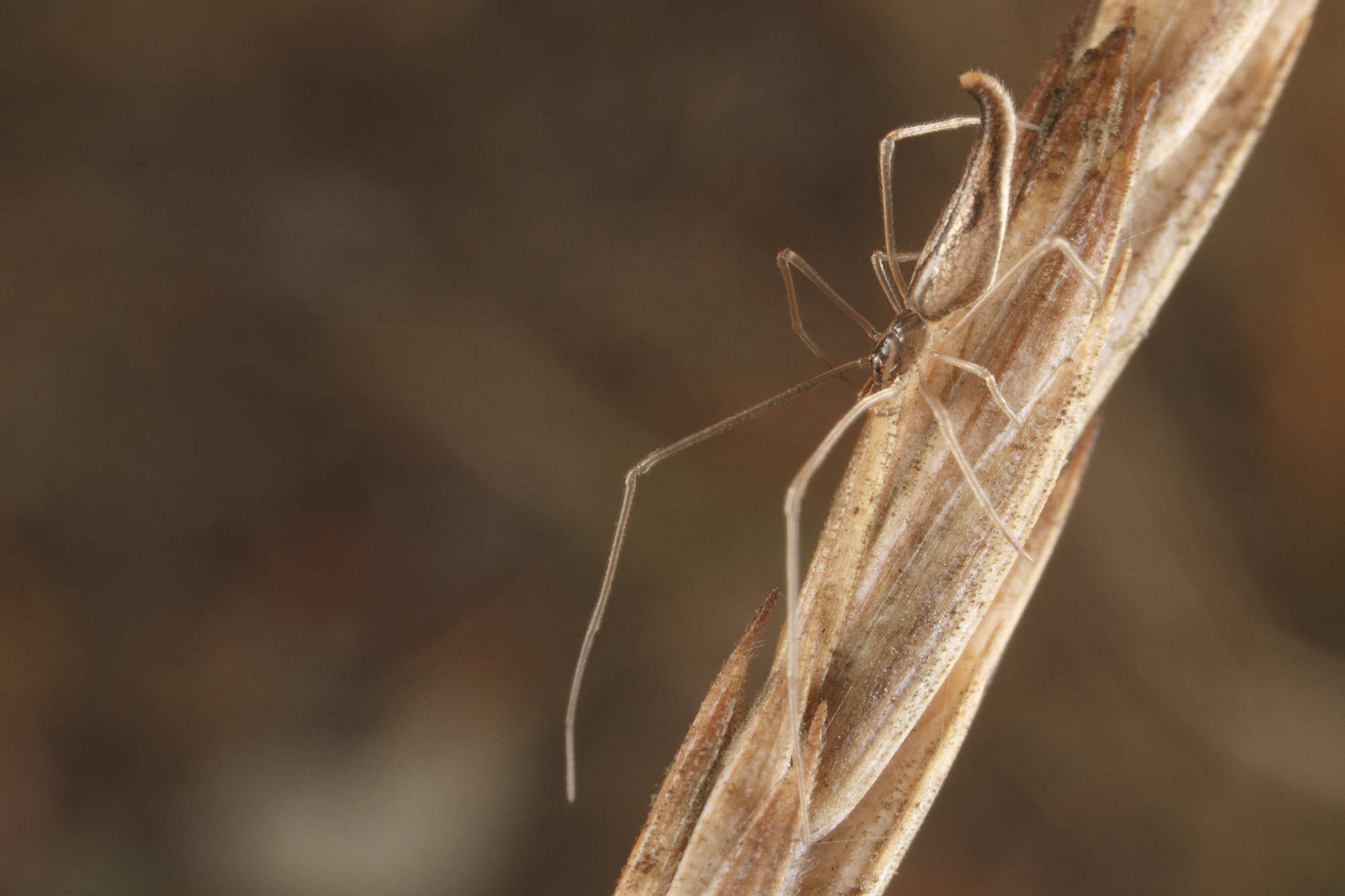
Rhomphaea fictilium from my field site at Island View Beach on Vancouver Island, BC. This spider does not show much resemblance to its relatives the black widows, who are found nearby! Photo: Sean McCann (used with permission).
Rhomphaea is a Latin word of Thracian origin that literally means long spear or javelin. The long, straight abdomen of the male in the photo below helps explain the name.
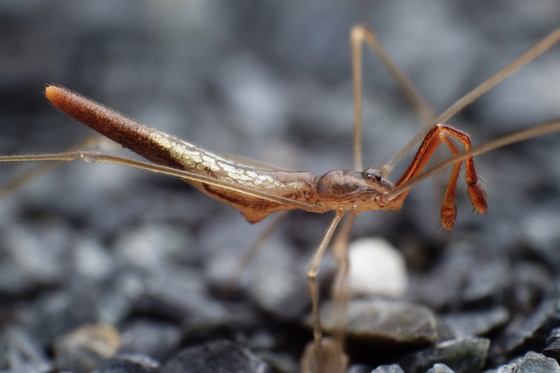
Male Rhomphaea fictilium with long, “spear-like” abdomen and extremely long pedipalps. Photo: Kyron Basu, licensed under CC BY-ND-NC 1.0.
Below is a female Rhomphaea projiciens with her egg sac. Note that the spider has a tiny spine on the end of her abdomen, making it more literally spear-like!
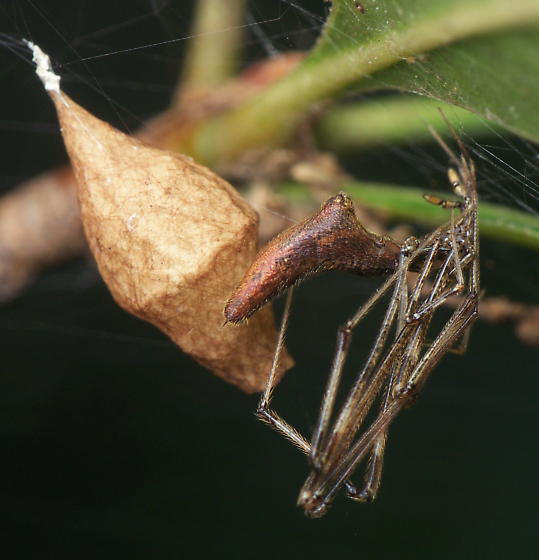
Rhomphaea prociciens female with egg sac. Photo: Jon Hart (used with permission).
My first encounter with this genus was observing Rhomphaea fictilium. Fictilis means “clay” in Latin, and the Latin-derived English adjective fictile “means capable of being molded.” The abdomens of Rhomphaea fictilium are worm-like and flexible, allowing the spider to change its shape. This ability may help Rhomphaea to camouflage itself in different contexts – the shortened abdomen of the little one in the photo above helps it to blend in with the seed heads it rests on. When their abdomens are held out long and straight, these spiders can look like very convincing sticks. The incredible photo below shows an individual that looks like it has the tail of a (very tiny) dragon!
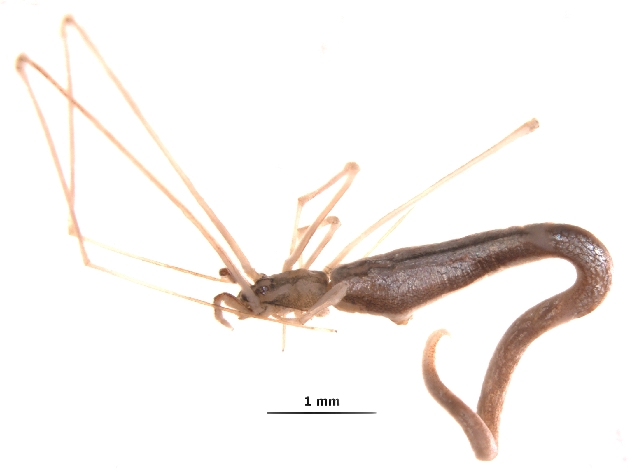
Rhomphaea fictilium with extended abdomen (dragon’s tail?). Photo: Gergin Blagoev, licensed under CC BY 3.0.
As well as having wonderfully strange morphology, Rhomphaea have rather unusual habits. Most spiders are generalist predators, and spiders in the family Theridiidae typically build tangle webs that they use to catch crawling insects and other arthropods, including other spiders. Rhomphaea, unlike most of their relatives, specialize on hunting other spiders. They do sometimes build their own rudimentary webs from just a few silk lines, but they also enter the webs of other spiders and use aggressive mimicry to hunt their owners. Rhomphaea will pluck the web and produce vibrations that lure the resident spider out to investigate what they perceive to be prey caught in the web. The web-building hunter then becomes the hunted, tricked into the approaching the dangerous intruder. Rhomphaea fictilium have been reported to prey on other theridiids, orb-weavers (araneids), sheet-weavers (linyphiids) and others.

Rhomphaea fictilium with its unfortunate prey. Note that the spider is covered with silk – theridiids comb sticky silk out of their spinnerets with their fourth legs and throw it over their victims to subdue then before biting. Photo: Al Denesdbeck (used with permission).
These tiny, cryptic spiders are rare and difficult to spot, but keep your eyes out for them in low tree branches, grasses, and bushes – or in the webs of other spiders!
References & further reading
Bradley, R. A. (2012). Common Spiders of North America. Univ of California Press.
Exline, H., & Levi, H. W. (1962). American spiders of the genus Argyrodes (Araneae, Theridiidae). Arañas americanas del género Argyrodes (Araneae, Theridiidae). Bulletin of the Museum of Comparative Zoology., 127(2), 75-202. Full text at BHL
Paquin, P., & Dupérré, N. (2001). On the distribution and phenology of Argyrodes fictilium (Araneae, Theridiidae) at its northern limit of North America. Journal of Arachnology, 29(2), 238-243. PDF

